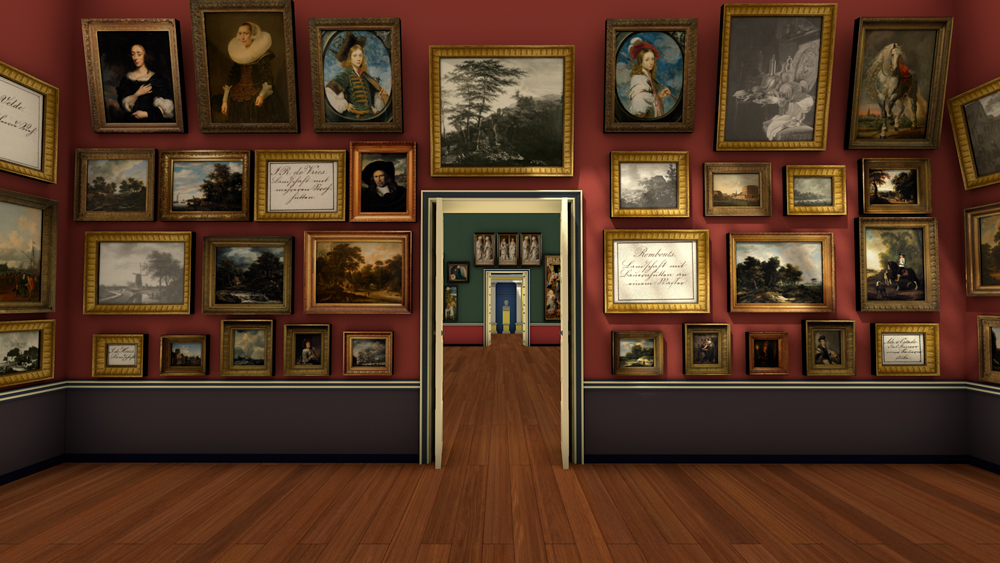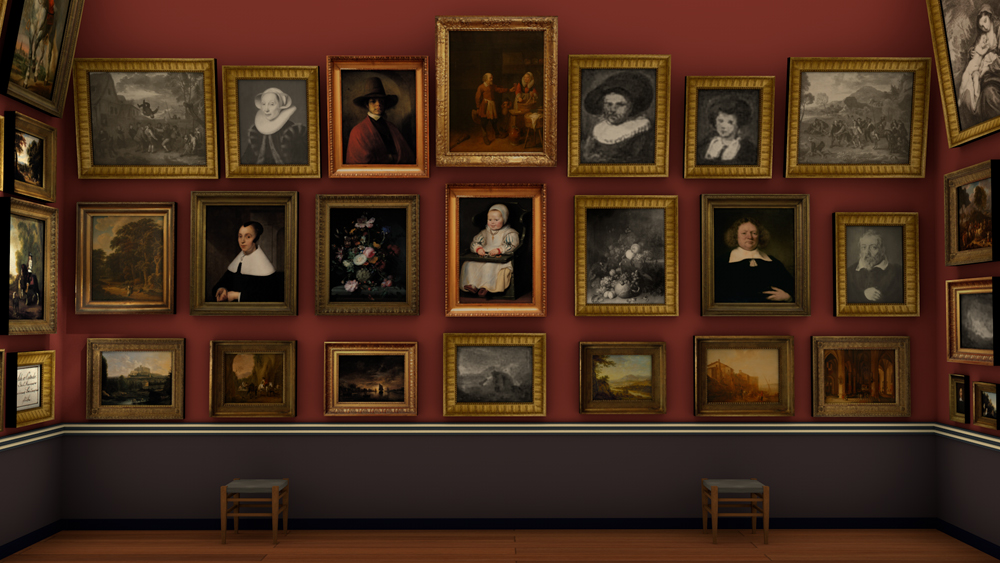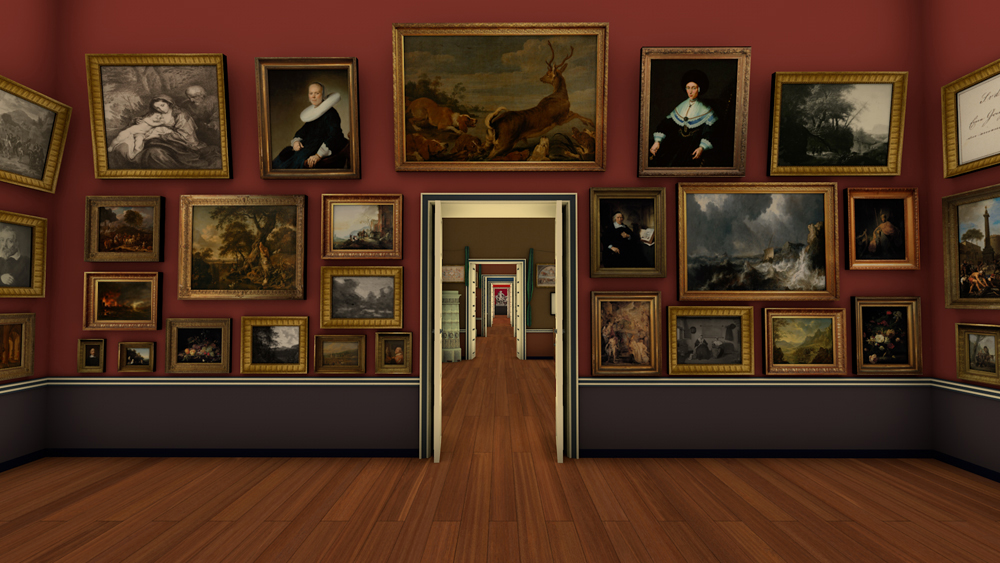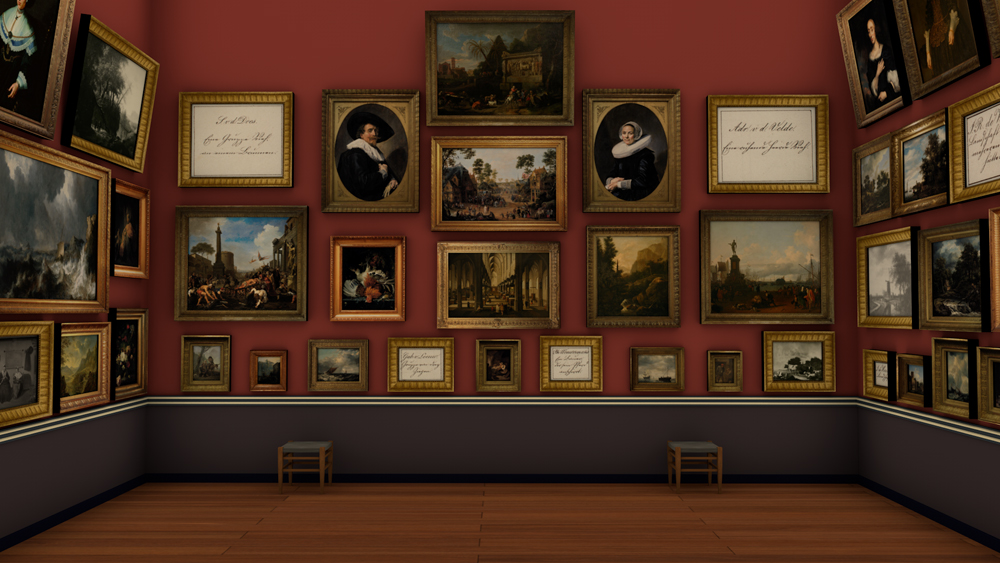1833 Dutch and Flemish room
Rubens
in the centre
In 1833, the first skylight room of the painting gallery was dedicated to Dutch and Flemish painting. It was dominated by portraits, animal pieces, landscapes and still lifes – genres that, according to academic art theory, only had a minor, subordinate status.
The visitor found the genre of the highest rank, biblical history painting, only in one spot: exhibited on the north wall, to the right of the entrance, were Rembrandt’s “David Playing the Harp before Saul” (inv.-no. 498) and Rubens’ “Colour Sketch for the Altar of the Church of the Augustinian Fathers in Antwerp” (inv.-no. 464). Their arrangement allowed for a direct comparison between the two painters, who, especially after Belgium’s independence in 1830, were regarded as the main protagonists of respectively Dutch and Flemish art.
Yet, Peter Paul Rubens had a dominant position in the Dutch and Flemish room: a number of other paintings attributed to him were displayed in a prominent manner. The attribution of these works, however, has changed over time. Exhibited in the upper right corner of the south wall, for example, was the “Image of a Horse” (inv.-no. 246), which today is classified as a work of the “Rubens School”. “Rubens’ Child” (inv.-no. 763), nowadays attributed to Cornelis de Vos, was hung in the centre of the west wall. The child’s “parents” were displayed on the opposite wall: the pair of portraits today attributed to Frans Hals were thought to be representations of Rubens and his first wife (inv.-no. 77 and 78).
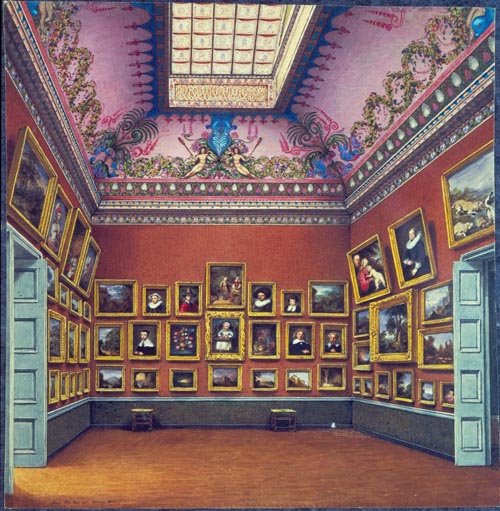
Decoration
Plants and women
The room’s ceiling was decorated with plant motifs and female nudes. These “natural” ornaments alluded to “the style of the later Middle Ages, which partially represented daily life in a lifelike manner, and was partially influenced by Italian art”, according to the interpretation provided in the Directory of 1835.
This was meant as an art-theoretical devaluation. Compared to religious and mythological history painting, Dutch and Flemish painting of especially the seventeenth century was considered to be deficient. Since it was thought to merely imitate nature in a slavish manner, it lacked any autonomy and meaning. In this context, it was only consistent that the Dutch and Flemings formed a programmatic prelude. The sequence of skylight rooms at the Neue Mainzer Strasse led to the high point that was Italian art, already visible through the Early German room.



